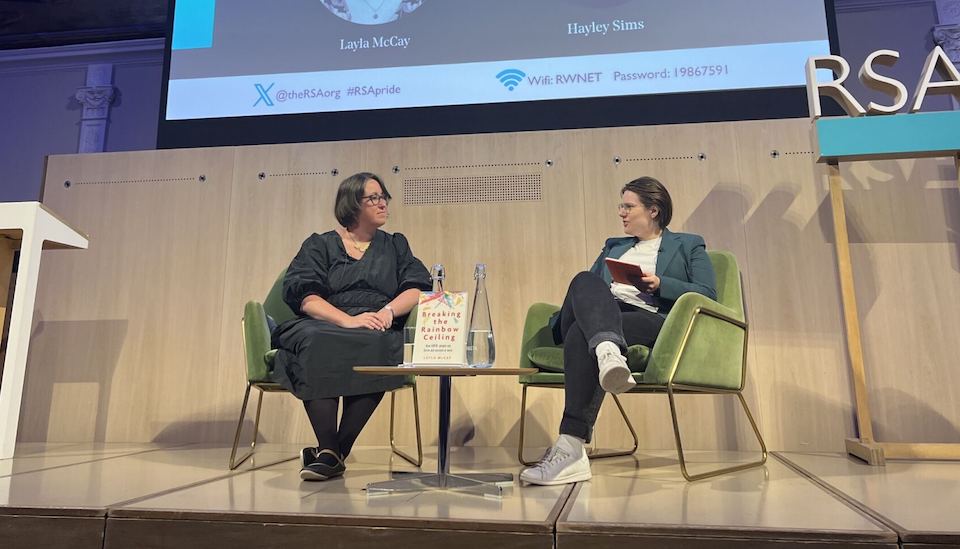Over the last five years I’ve written getting on for 800 blog posts. But I have rarely got the kind of reaction generated by yesterday’s on youth unemployment. I am grateful to all the kind people who re-tweeted or commented and to my friend David Aaronovitch for giving me a plug in his excellent column in this morning’s Times. A number of people have asked how the ‘bond for hope’ idea could be taken forward.
In the end it’s up to Government. There have been lots of helpful suggestions for refinements of the plan, but so far no one has come up with a killer reason why the idea is bad or wouldn’t work. But from my time in Downing Street I know the devil is in the detail and – quite rightly - something like this would only get anywhere near ministers if it had passed some pretty stringent scrutiny by officials. Without a political sponsor the chances of the idea getting traction are remote, but before I resign myself to irrelevance I thought I would use today’s post (sorry it’s a bit long) to address some of the main questions that would be raised if the idea was given a second look.
Where’s the money coming from?
The £2 billion of the ‘bond for hope’ to create 250,000 one year paid work placement for young unemployed people is made up of three equal contributions. A grant from Government, investment by businesses and investment by individuals. This means the Treasury has to find £660 million. This is both a lot of money and not very much depending on whether you are considering what else you could buy with it (the running costs of about 80 secondary schools, for example) or as a proportion of total public spending (0.1%). But there are two considerations which might make it slightly more attractive than the hundred and one other bids HMT is currently considering for its soon-to-be-unveiled growth plan. First, the ‘bond for hope’ plan proposes that for every £1 spent now by the Government a further £2 is invested in job creation through what is effectively a loan from business and citizens. The plan suggest this loan of made at an interest rate level below the level the Government is currently paying on the bonds it is selling in the open market. I have also proposed that the Government has a reserve power to roll forward the bond redemption date from five years to ten years so that the risk for public finances is reduced further (I don’t know whether this is a useful or practical suggestion). Second, initially at least, the plan is for one year and so should not be treated as recurrent expenditure. It is an emergency plan to deal with an emergency situation. The way the world is now, twelve months might as well be twelve years for all we can predict.
Will companies invest?
The plan proposes that the top UK listed 100 companies by capital value be asked to buy 1% of the bonds allocated to the business sector. Don’t forget this is a sub-optimal investment (at an interest rate slightly lower than available in the market), not a donation. There is no question that companies could afford to re-direct £7 million of their reserves to such a good cause. If the bond was launched with twenty of so already signed up (I suspect some of the biggest brands would volunteer to buy a lot more than 1%) my hunch is that other large businesses would be falling over themselves to join in. It’s a lot of good publicity for a few tens of thousands pounds a year foregone investment income.
Will individuals invest?
I have had five volunteers so far: Which is great, but doesn’t make much of a dent in the 660,000 needed. I suspect think this depends on the media and marketing. If newspapers got behind the idea and lots of celebrities signed up, and if the advertising industry donated some brain power and poster sites I think it could be done. Indeed, signing up could become a great opportunity for civic mobilisation with major events in towns and cities where people sign up and proudly receive their certificate in the presence of local VIPs. Labour’s attitude would also be important so it would be great to get some encouragement from any of my former colleagues.
Why not simply a charitable donation or a market rate investment?
This question - posed by Bruce Davis – was among those on my post yesterday. My instinct is that £1,000 is a lot to ask people to donate (even with gift aiding) and that if the Government had to pay market interest the scheme would be less attractive and probably seen as a round-about way of increasing public borrowing. Investing below the market rate and requiring people to invest for five years seemed to me to be a reasonable ask, and one which the Government could say was sufficiently different to conventional public borrowing.
Could it be done quickly?
There are two sides to this. As long as the Government put its share in first the scheme could start straight away. The £2 billion cost is across the whole year so the corporate and individual contributions could be collected over the full twelve months. In terms of delivery, to simplify the process I would suggest that each placement (in schools, old people homes or public space projects) carries a fixed one-off £250 fee (this would add another £60 million to the cost). Using the existing network of welfare to work providers and/or local authorities the ‘bond for hope’ board (a super slim overseeing agency) using an IT system donated by a major public sector provider would reimburse organisations for any placements they made on the basis of a simple set of publicly stated criteria (the key point is that the payments are made after the placement so there is no hold up while contracts are negotiated). To minimise the bureaucracy and risk for the schools and homes etc. the young people would generally be contracted to a local provider who would be responsible for intervening if, for example, the young person stopped turning up, made a mess of things or simply got another job.
Isn’t this exploitation?
For the 250,000 young people £125 per week is a lot better than nothing or basic benefits, but it’s hardly a living wage. So, two other aspects to the design: First, I would have a weekly hours limit of 25 so the youngsters would have some free time which they could dedicate to study or job search. Also, I would allow them to have up to ten hours additional work (for example, in a bar) so the scheme didn’t discourage people from taking other opportunities which could grow into full jobs. I suggested yesterday that free on-line courses - with much of the accreditation being on the job - could be a required element in each of the major areas of placement (enabling the trainees to become qualified as care or teaching assistants, for example). It would be useful to know how practical this would be.
Would the employers really want to be part of the scheme?
As any charity will tell you, it costs money to work usefully with volunteers. The ‘bond for hope’ funding includes a £25 per week per youngster fee for the employer to help with costs. Beyond this, the scale of the project should help. Because every primary school, old people’s home and community council is taking people on, websites and social networks can both spread best practice on how to utilise and support the youngsters as well as providing a safe public forum for any young person who feels they are being exploited or simply wasted. Also, the placements agencies (see answer above) would be required to intervene if either employer or youngster had serious concerns.
I genuinely think that with a fair wind this scheme could be up and running by March next year, even if it took a few more months to be phased in fully. Yesterday, everyone was very kind to me and my idea. Now may be the time for some reality checks before I get completely carried away and set up a ‘bond for hope’ encampment in the park opposite the Treasury.
Related articles
-
Prosperous Places: creating thriving communities
Tom Stratton
With regional growth at the top of the agenda, it is vital that we create thriving communities across economic, social and natural perspectives. Prosperous Places is a suite of interventions aimed at responding to the unique ambitions and challenges of places.
-
Pride interview: Felipe Tozzato
Deborah Ajia
The commercial photographer and RSA Fellow explains what Pride means to him, the importance of courage, making friends through rugby and why being gay is his superpower.
-
Let's smash the Rainbow Ceiling
Ben Oliver
Reflecting on Layla McCay’s recent RSA talk, Ben Oliver offers five ways for employers to create a positive culture for their LGBTQ+ staff that benefits both the individual and the organisation.




Be the first to write a comment
Comments
Please login to post a comment or reply
Don't have an account? Click here to register.